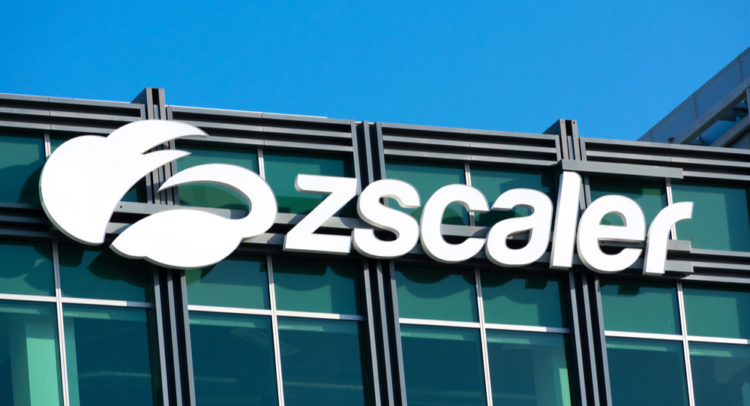Zscaler (ZS) provides cloud-based internet security solutions geared toward accelerating digital transformation so organizations can be more efficient, resilient, and secure.
Claim 50% Off TipRanks Premium and Invest with Confidence
- Unlock hedge-fund level data and powerful investing tools designed to help you make smarter, sharper decisions
- Stay ahead of the market with the latest news and analysis so your portfolio is always positioned for maximum potential
For Fiscal Q2 2022 ended January 31, Zscaler reported a 63% year-over-year jump in revenue to $255.6 million and surpassed the consensus estimate of $241.6 million. It posted adjusted EPS of $0.13, which rose from $0.10 in the same quarter the previous year and beat the consensus estimate of $0.11. The company exited the quarter with $1.6 billion in cash.
For Q3 2022, Zscaler anticipates revenue in the band of $270 million to $272 million. It expects adjusted EPS in the range of $0.54 to $0.56.
With this in mind, we used TipRanks to take a look at the risk factors for Zscaler.
Risk Factors
According to the new TipRanks Risk Factors tool, Zscaler’s top risk category is Finance and Corporate, with 26 of the total 61 risks identified for the stock. Tech and Innovation and Ability to Sell are the next two major risk categories with 11 and 8 risks, respectively. Here are the takeaways from Zscaler’s risk profile.
The company informs investors that its stock ownership is concentrated with insiders such as executive officers and directors. It explains that insiders control more than 51% of the company’s common stock, with CEO Jay Chaudhry owning about 19.1% of Zscaler’s shares. As a result, insiders have significant control over matters that require shareholder approval. Therefore, Zscaler cautions that it might take actions that insiders favor even if other shareholders oppose them.
Zscaler has amended its corporate bylaws and cautions that they contain provisions that may not be favorable to some investors. For example, it explains that its board has significant power to block hostile takeovers. The company cautions that the board’s ability to block potential mergers or changes in the management team may adversely affect its stock price.
Additionally, Zscaler has amended its certificate of incorporation to appoint a specific court in Delaware as the only forum where disputes between the company and its shareholders can be resolved. The company says that its selection of an exclusive judicial forum for resolving shareholder disputes may limit the ability of shareholders to bring claims to courts of their choice. It goes on to say that may discourage shareholder lawsuits against the company, its board, and its executives.
Finally, Zscaler cautions that it may be unable to fully use its accumulated loss carryforwards to offset its tax liabilities. In the U.S., the company explains that it has about $1.8 billion in loss carryforwards, which it could use to reduce its future federal and state tax bills. The company also has foreign loss carryforwards of more than $70 million. But it says part of its loss carryforwards are subject to expiration, beginning as early as 2024. Moreover, if there is a significant change in the ownership of Zscaler, the company says it may be limited on the amount of loss carryforwards it may use to offset its tax bills, and inability to fully use the loss carryforwards to reduce tax expenses could adversely affect the company’s operating results.

Analysts’ Take
Daiwa analyst Stephen Bersey recently upgraded Zscaler stock to a Buy from a Sell and assigned it a price target of $296. Bersey’s price target suggests 47.16% upside potential.
Consensus among analysts is a Moderate Buy based on 18 Buys, 5 Holds, and 1 Sell. The average Zscaler price target of $311.17 implies 54.70% upside potential to current levels.

Download the TipRanks mobile app now.
To find good ideas for stocks trading at attractive valuations, visit TipRanks’ Best Stocks to Buy, a newly launched tool that unites all of TipRanks’ equity insights.
Read full Disclaimer & Disclosure
Related News:
Inside Hormel Foods’ Risk Factors
Understanding HP’s Risk Factors Amid the Russia-Ukraine Conflict
Analyzing Southern Copper’s Risk Factors
















